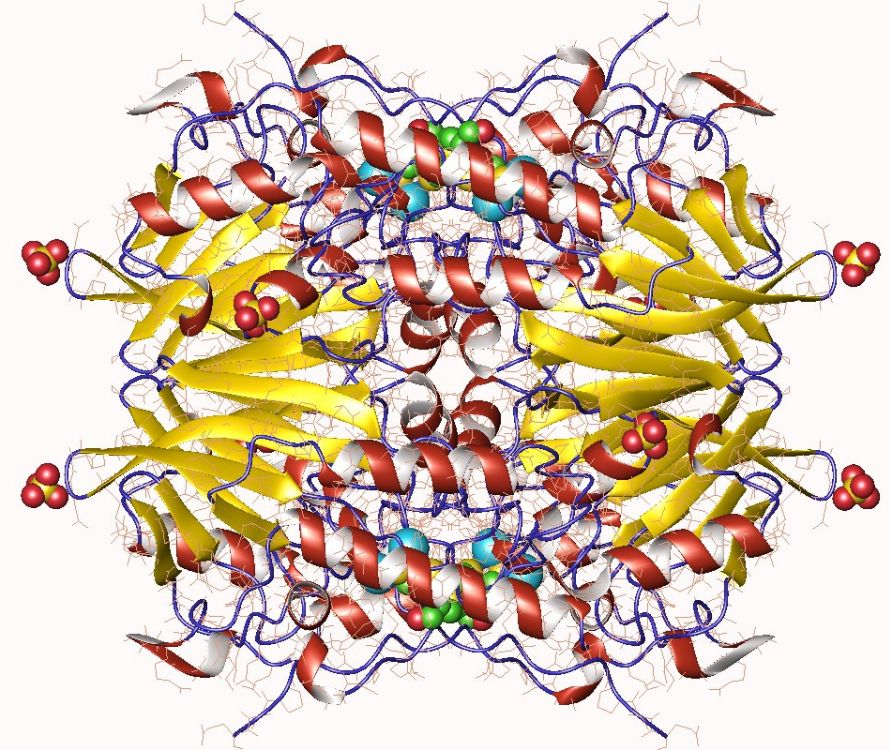Scientists find bacterial ‘Achilles’ heel’ to combat antibiotic resistance
Drug-resistant bacteria kill over one million people worldwide each year. Bacteria develop resistance mechanisms via repeated exposure to antibiotics. Antibiotic overprescription, where antibiotics are used inappropriately, has significantly increased during the COVID-19 pandemic and contributed to the rise in bacterial antibiotic resistance cases.

β-lactam antibiotics, such as penicillin, interfere with the synthesis of peptidoglycans, key molecules that maintain the structural integrity of bacterial cells. Without peptidoglycans, bacteria are prone to cell lysis.
Bacteria can acquire resistance to these drugs by hydrolyzing β-lactam; thus, rendering it inactive, using the enzyme β-lactamases. There are two kinds of bacterial β-lactamases: serine- and metallo-β-lactamases, or MβLs, and no inhibitors currently exist for the latter. Therefore, scientists like Alejandro Vila set out to study MβLs and how they acquire drug resistance.
Vila was this month’s speaker on ASBMB Breakthroughs, a webinar series highlighting research from American Society for Biochemistry and Molecular Biology journals. He is a professor of biophysics at the University of Rosario, Argentina, and an associate editor of the Journal of Biological Chemistry, or JBC. During his talk, sponsored by JBC, Vila shared his decades-long work on MβLs.
In the early 2000s, Vila’s team discovered MβLs’ dependence on zinc. Without this crucial metal, these enzymes cannot bind to their substrates.
“The loss of zinc reveals an Achilles’ heel of MβLs,” Vila said.
Vila and his colleagues showed that this dependence is crucial in the bacterial periplasm, or the gel-like space between the inner and outer bacterial cell membranes, where MβLs cleave β-lactam antibiotics. Vila emphasized the importance of studying MβL activity in the periplasm, rather than in test tubes in the lab, to preserve their native context.
“In the past decade, our lab’s main driving force has been to fill the gap between in vitro protein studies and the resistance phenotypes we’re seeing in the clinic,” he said.
A previous study showed that immune system activation in mice caused the cellular concentration of metal ions, such as zinc, to plummet. Vila’s team found that such a lack of zinc in the periplasm destabilized MβLs, althought not all MβLs were affected equally.
They discovered that the membrane-bound New Delhi MβL 1, or NDM-1, is much more stable than the soluble Verona integron-encoded MβL 2, or VIM-2, in a zinc-depleted periplasm. In addition, NDM-1 which was genetically engineered to be soluble, lost this stability. Based on these results, they concluded that membrane anchoring stabilizes MβLs in the absence of zinc.
In a later study, Vila’s team performed nuclear magnetic resonance, or NMR, spectroscopy in live cells to provide a structural explanation for this phenomenon in the bacterial periplasm.
“It’s really important to understand what’s going on in live bacterial cells at the atomic level, and NMR is the only technique that will allow that,” Vila said.
Vila and his colleagues showed that the C-terminal region of zinc-deficient, or “apo,” NDM-1 is disordered and flexible, but its zinc-bound, or “holo,” counterpart, is not. This instability targets apo NDM-1 for degradation by bacterial serine proteases Prc and DegP.
In the same study, Vila’s group elucidated on a possible explanation for how antibiotic resistance evolved in NDM-6, an NDM-1 variant classified as a Tier-1 mutant for having high tolerance to zinc deprivation. The team showed that an alanine to valine mutation on residue 233 at the C-terminus of NDM-1 allowed its apo form to assume the ordered and inflexible configuration of its holo form; thus, escaping degradation by Prc and DegP. This mechanism can confer resistance by providing MβLs a much-needed stability when zinc is scarce, like at the host–pathogen interface, where bacteria are challenged by the host immune system.
“This ability to increase stability and escape degradation by proteases is completely new paradigm in the evolution of metallo-β-lactamases,” Vila said. “We still need to understand this process better, but I think that modulating MβL stability rather than inhibiting it is a good idea that is worth exploring.”
In case you missed it, you can watch Vila’s full Breakthroughs webinar here.


Up next
Biosynthesis and regulation of plant phenolic compounds
May 14, 2025 12:15–1 p.m. Eastern
Erich Grotewold of Michigan State University will present his research on plant gene regulatory networks.
Register for the whole ASBMB Breakthroughs webinar seriesEnjoy reading ASBMB Today?
Become a member to receive the print edition four times a year and the digital edition monthly.
Learn moreGet the latest from ASBMB Today
Enter your email address, and we’ll send you a weekly email with recent articles, interviews and more.
Latest in Science
Science highlights or most popular articles

E-cigarettes drive irreversible lung damage via free radicals
E-cigarettes are often thought to be safer because they lack many of the carcinogens found in tobacco cigarettes. However, scientists recently found that exposure to e-cigarette vapor can cause severe, irreversible lung damage.

Using DNA barcodes to capture local biodiversity
Undergraduate at the University of California, Santa Barbara, leads citizen science initiative to engage the public in DNA barcoding to catalog local biodiversity, fostering community involvement in science.

Targeting Toxoplasma parasites and their protein accomplices
Researchers identify that a Toxoplasma gondii enzyme drives parasite's survival. Read more about this recent study from the Journal of Lipid Research.

Scavenger protein receptor aids the transport of lipoproteins
Scientists elucidated how two major splice variants of scavenger receptors affect cellular localization in endothelial cells. Read more about this recent study from the Journal of Lipid Research.

Fat cells are a culprit in osteoporosis
Scientists reveal that lipid transfer from bone marrow adipocytes to osteoblasts impairs bone formation by downregulating osteogenic proteins and inducing ferroptosis. Read more about this recent study from the Journal of Lipid Research.

Unraveling oncogenesis: What makes cancer tick?
Learn about the ASBMB 2025 symposium on oncogenic hubs: chromatin regulatory and transcriptional complexes in cancer.

